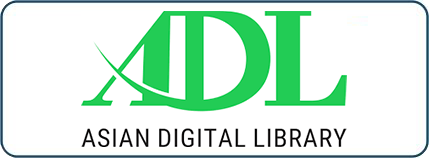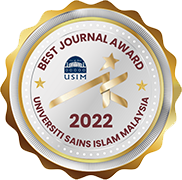REVISITING THE GOLD AND SILVER NISAB FOR ZAKAT: A NUMISMATIC STUDY OF PROPHETIC ERA DINAR AND DIRHAM WEIGHTS AND MEASURES
DOI:
https://doi.org/10.33102/mjsl.vol12no1.569Keywords:
Nabawi, Nisab, Zakat, dinar, dirham, qiratAbstract
In the pivotal second year of Hijrah, a series of momentous events unfolded in Madinah, marking significant transformations within the Muslim community. Central to this period was the divine ordinance of zakat, mandating Muslims to allocate 2.5% of wealth, exceeding the nisab threshold, towards charitable deeds. Historically, this threshold was defined by the weight of 20 gold dinars or 200 silver dirhams, echoing a time predating the metric system's introduction in the late 18th century. This study investigates historical numismatic evidence to scrutinize established weights of dinars and dirhams from the Nabawi era, contrasting traditional values with those determined by contemporary numismatists — approximately 4.25 grams for dinars and 2.975 grams for dirhams, reflecting a 10:7 weight relationship not evident during the Prophet Muhammad’s (PBUH) lifetime nor during the era of his great-grandfather, Hashim ibn ‘Abd Manaf (464-497 CE). The finding reveals discrepancies stemming from the Umayyad Caliph ‘Abd al-Malik’s monetary reforms in the 7th century, which significantly lowered the standard weights of these currencies. By critically examining historical narratives alongside modern numismatic findings, this study proposes an alternative, empirically substantiated taqribi (approximate) definition for the dinar and dirham. This reevaluation not only challenges longstanding fiscal conventions but also aligns with Shaykh Yusuf al-Qaradawi’s assertion on the necessity of redefining zakat thresholds for contemporary application. Findings advocate for a revision back to the nisab’s original standards, thereby honoring directives against altering the Muslim ummah’s monetary foundations, as evidenced by teachings. Through analytical journey, aspiration is to restore authentic nisab values for gold and silver, offering a recalibrated framework for Islamic economic practices.
Downloads
References
Adelson, H. L. (1957). Light weight solidi and byzantine trade during the sixth and seventh centuries. New York, NY: American Numismatic Society.
Al-Baladhuri, A. (2002). Kitab futuh al-buldan. Gorgias Press.
Al-Qaradawi, Y. (2013). Fiqh al zakat. Islamic Book Trust.
Al-Tabari (1988). The history of al-Tabari, Volume VI: Muhammad at Mecca (W. Montgomery Watt and M.V. McDonald, Trans.). State University of New York Press.
Al-Tabrani, S ibn A. (1984). Musnad al-shāmiyyīn (Hadith 892). Beirut: Mu’assasah al-Risālah.
Anas, M. ibn (2014). Al muwatta’ of Imam Malik ibn Anas. Diwan Press.
Bacharach, J. L., & Gordus, A. A. (1972). The purity of sasanian silver coins: An introduction. Journal of the American Oriental Society, 92(2), 280-283.
Balog, P. (1976). Umayyad, 'ābbasid and tūlūnid glass weights and vessel stamps. Series: Numismatic Studies. New York: American Numismatic Society.
Bates, M. L. (2017). The two mithqals and the weight standard of the islamic dinar. Rome: 5th Simone Assemani Symposium on Islamic Coinage.
Bradford, J. W. (2012). Weights and measures. Oxford Encyclopedia of Islam and Law.
Ehrenkreutz, A. S., & Bacharach, J. L. (1992). Monetary change and economic history in the medieval Muslim world. Aldershot: Variorum.
Elsen, J. (2005). The Roman-Byzantine weight system (fin 3e siècle - fin 8e siècle). Dans Bulletin du Cercle d’Etudes Numismatiques, 42(1), 101-113.
Fernandez, F. (2003, July 29). “Malaysia's first gold dinar available to public next week”. TheStar. https://www.thestar.com.my/news/nation/2003/07/29/malaysias-first-gold-dinar-available-to-public-next-week
Gignoux, P. & Bates, M. (2010). “Dirham”. Encyclopaedia Iranica. http://www.iranicaonline.org
Göbl, R. (1971). Sasanian numismatics. Braunschweig.
Grierson, P. (1960). The monetary reforms of ‘Abd al-Malik: their metrology basis and their financial repercussions. Journal of the Economic and Social History of the Orient, 3, 241-264.
Grierson, P. (1982). Byzantine coins. University of California Press.
Grierson, P. (1999). Byzantine coinage. Washington, D.C.: Dumbarton Oaks Research Library and Collection.
Gyselen, R. (1989). Note on sasanian metrology: The drachms of khusro II. Revue Belge de Numismatique et de Sigillographie, 135, 5-23.
Gyselen, R. (1989). The administrative geography of the sasanian empire: The sigillographic testimonies. Paris.
Gyselen, R. (1990). A treasure of late Sasanian coins. Revue Numismatique, 212-231.
Heidemann, S. (1998). The merger of two currency zones in early Islam. The byzantine and Sasanian impact on the circulation in former byzantine Syria and Northern Mesopotamia. Journal of the British Institute of Persian Studies, 36, 95-112.
Heidemann, S. (2010). Numismatics. In the new Cambridge history of Islam ( pp. 648-663). Cambridge University Press.
Henning, W. B. (1961). A sassanian silver bowl from Georgia. Bulletin of the School of Oriental and African Studies, 24(2), 353–356. doi:10.1017/S0041977X00091473
Ibn Abdil-Barr (2017). At-Tamhid (Sharh al-Muwatta). Sifatu Safwa.
Ibn Khaldun, I. (1969). Al Muqaddimah: An introduction to history. Princeton University Press.
Ibn Sallam, A. ‘U. Q. (2003). Kitab al-Amwal (The Book of Revenue). UK: Garnet Publishing.
Kassim, H. (2017). The coinage reforms of ‘Abd al-Malik bin Marwan and its impact on zakat in Islam. In 8th International Conference on Language Innovation, Culture and Education (pp. 61-73). https://icsai.org/procarch/8iclice/8iclice-096.pdf
Madelung, W. (2010). “Dabuyids”. Encyclopaedia Iranica. http://www.iranicaonline.org
Malek, H. M. (1993). The dābūyid ispahbads of Ṭabaristān. American Journal of Numismatics, 5(6), 105-160. American Numismatic Society.
Markowitz, M. (2014). “Coinage of the First Caliphate”. Coinweek. https://www.coinweek.com
Mordtmann, A. D. (1880). On pehlevi numismatics. Journal of the German Oriental Society, 34(1), 147.
Shaddel, M. (2021). Monetary reform under the Sufyanids: the papyrological evidence. Leiden University; Bulletin of SOAS, 84(2), 263-293.
Yanagihashi, H. (2004). A history of the early islamic law of property: Reconstructing the legal development, 7th-9th Centuries, 217-234. Leiden: Brill.
Downloads
Published
Issue
Section
Categories
License
Copyright (c) 2024 Hishamuddin Mohd Kassim

This work is licensed under a Creative Commons Attribution-NonCommercial 4.0 International License.














































